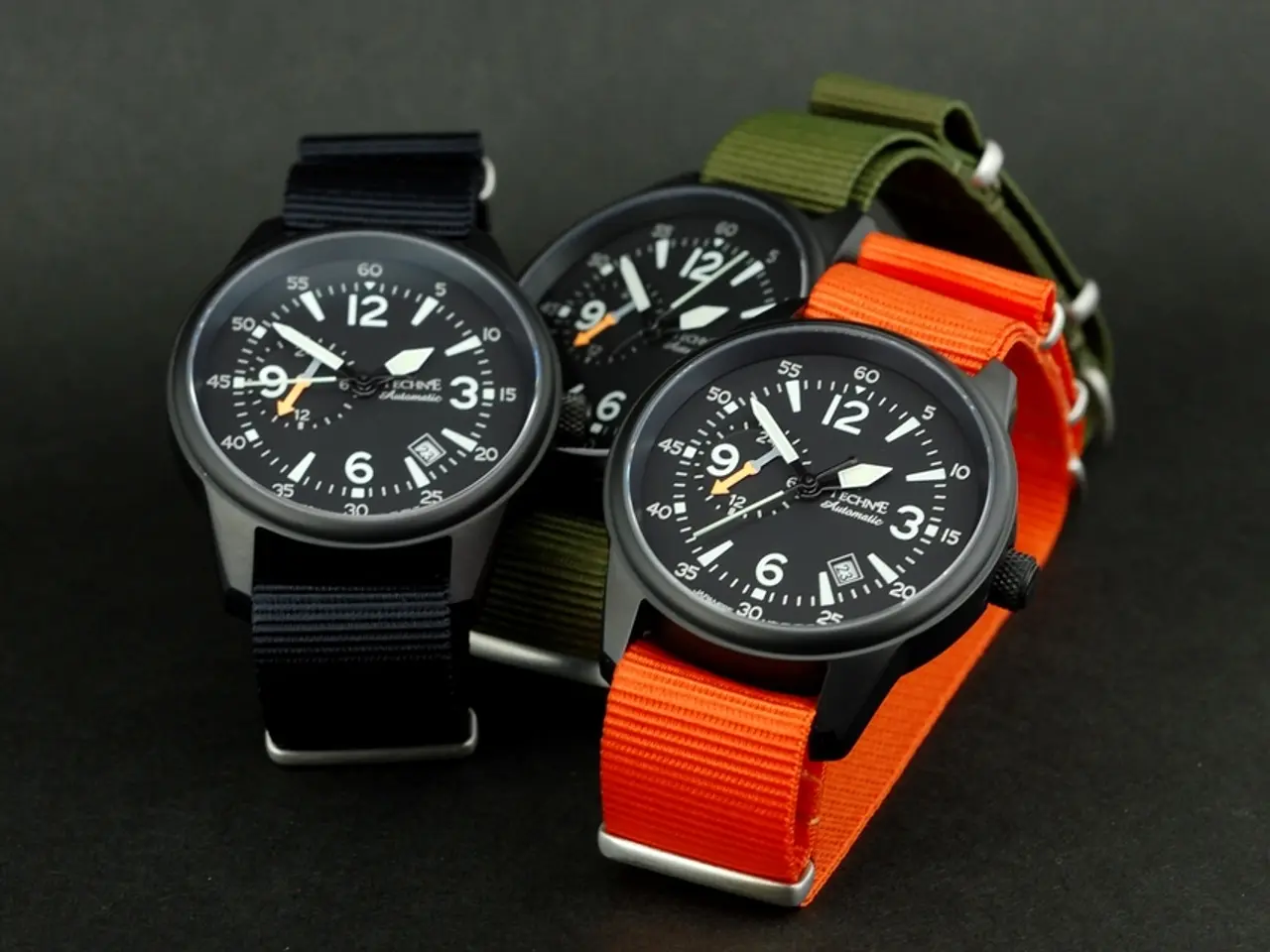Unknown person: Martin Cheney
In the realm of Canadian clockmaking, the name Martin Cheney may not be as familiar as some of his contemporaries. However, the absence of his clocks in common digital archives does not diminish his significance in the field.
Born in 1778 in East Hartford, Connecticut, Cheney was part of a prominent American clock-making family. By 1803, he had moved to Windsor, Vermont, and later, in 1809, he crossed the border to Montreal, Canada.
In Montreal, Cheney formed a partnership with J. A. Dwight in 1817. Their business, located at 104 St Paul Street, was a hub of clockmaking activity. The collaboration ended in 1830, but the duo left behind a legacy of fine clockmaking.
Cheney's clocks are distinguished by their outstanding inlaid mahogany cases, well-proportioned designs, and New England style raised center brass inlay tops. He was known to have crafted both movements and cases, as well as wall and tall case clocks, and even banjo clocks.
Despite his contributions, there is a dearth of information about Cheney beyond 1830. This lack of documentation has made it challenging to trace his career in detail.
The Canadian Clock Museum, located in Deep River, Ontario, focuses specifically on Canadian clocks and clocks with a Canadian connection. While the museum's collection includes many clocks from various Canadian makers, it may not have any specific focus on Martin Cheney's clocks.
However, a clock at a historic inn in Halifax, Nova Scotia, has been suggested as potentially being a Cheney clock. If this is confirmed, it would be a rare example of Canadian clockmaking from that era.
For those seeking more specific details about Cheney's clocks, such as dates or known examples, it might be beneficial to consult specialized historical horology collections, local Montreal historical societies, or antique clock reference works focusing on Canadian artisans.
In conclusion, Martin Cheney, while not as widely recognized as some other clockmakers, played a significant role in the development of Canadian horology. His legacy, though not as extensively documented as one might hope, continues to intrigue horology enthusiasts and historians.
- Martin Cheney's clocks, despite not being as widely represented in digital archives, were distinguished by their intricate inlaid mahogany cases, well-proportioned designs, and New England style raised center brass inlay tops, making them an interesting find for vintage clock collectors.
- Despite the lack of extensive documentation about his post-1830 career, Cheney's clocks showcase the intersection of clock collecting as a lifestyle choice and the technology of horology in the early 19th century.
- In the realm of sports, the pursuit of finding and restoring Cheney clocks can be considered a competitive endeavor that requires the combined knowledge of historical societies, antique clock reference works, and local Montreal resources, much like the hunt for rare sports memorabilia or artifacts.




